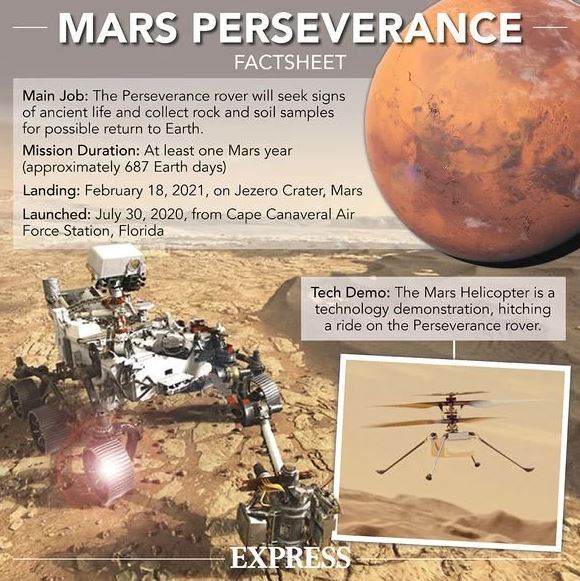Note4Students
From UPSC perspective, the following things are important :
Prelims level: Various missions on Mars
Mains level: Mars mission worldwide and their success

NASA’s rover Perseverance, the most advanced astrobiology laboratory ever sent to another world has landed safely on the floor of Jezero Crater on Mars.
Last week, separate probes launched by the UAE (Hope Mission) and China (Tianwen-1) reached Martian orbit. NASA has three Mars satellites still in orbit, along with two from the European Space Agency.
Perseverance Rover
- The Perseverance rover weighs less than 2,300 pounds and is managed by NASA’s Jet Propulsion Lab.
- It is a part of the mission named ‘Mars 2020’.
- The rover’s mission will be to search for signs of past microbial life. It will also collect samples of Martian rocks and dust, according to the release.
- All of NASA’s previous Mars rovers — including the Sojourner (1997), Spirit and Opportunity (2004) and Curiosity (exploring Mars since 2012) — were named in this way.
Objectives of the mission
- Looking for habitability: identify past environments capable of supporting microbial life.
- Seeking bio-signatures: seek signs of possible past microbial life in those habitable environments, particularly in special rocks known to preserve signs over time.
- Caching samples: collect core rock and regolith (“soil”) samples and store them on the Martian surface.
- Preparing for humans: test oxygen production from the Martian atmosphere.
Major components
(a) Looking for underground water
- Perseverance will carry the Radar Imager for Mars’ Subsurface Experiment (RIMFAX).
- The instrument will look for subsurface water on Mars – which, if found, will greatly help the case for a human mission or the cause of a human settlement on Mars.
(b) Testing a helicopter
- The Mars Helicopter is a small drone. It is a technology demonstration experiment: to test whether the helicopter can fly in the sparse atmosphere on Mars.
- The low density of the Martian atmosphere makes the odds of actually flying a helicopter or an aircraft on Mars very low.
(c) Producing oxygen on Mars
- Perseverance will have an instrument – MOXIE, or Mars Oxygen In-Situ Resource Utilization Experiment – that will use 300 watts of power to produce about 10 grams of oxygen using atmospheric carbon dioxide.
- Should this experiment be successful, MOXIE can be scaled up by a factor of 100 to provide the two very critical needs of humans: oxygen for breathing, and rocket fuel for the trip back to Earth.
Get an IAS/IPS ranker as your 1: 1 personal mentor for UPSC 2024
